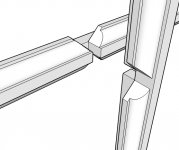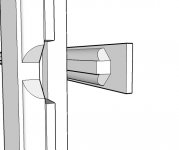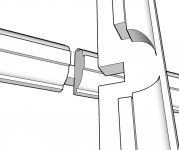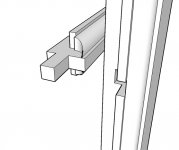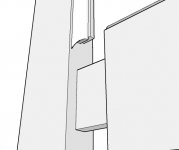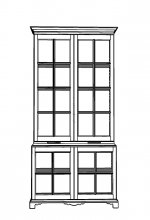ttalma
Well-known member
Attached is a couple of pictures of a drawing I am working on for the boston bookcase from a previous topic (http://sapfm.org/forum/index.php?topic=165.0)
I was wondering if this is correct. The first picture is where the mutins meet to divde the panes.
The second is where the mutins meet the rails and stiles.
If these are not correct could someone explain the correct method of joining them.
Thank -Tim
I was wondering if this is correct. The first picture is where the mutins meet to divde the panes.
The second is where the mutins meet the rails and stiles.
If these are not correct could someone explain the correct method of joining them.
Thank -Tim

